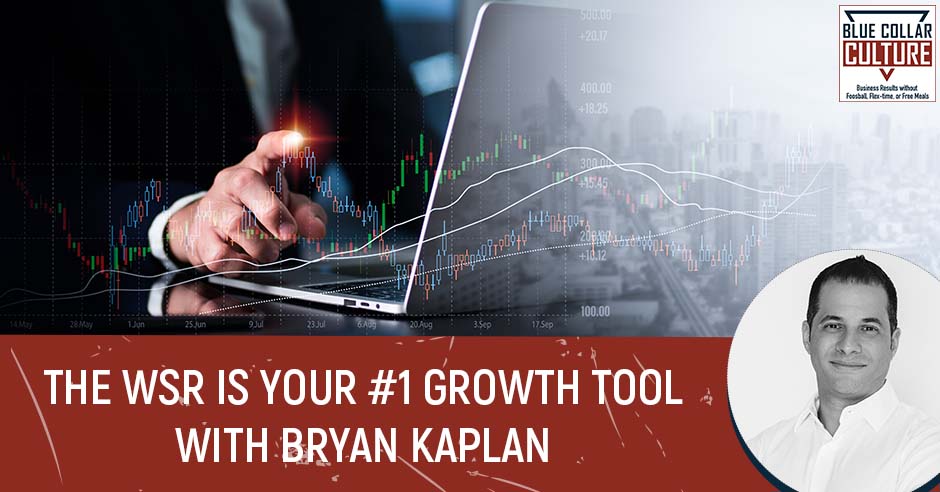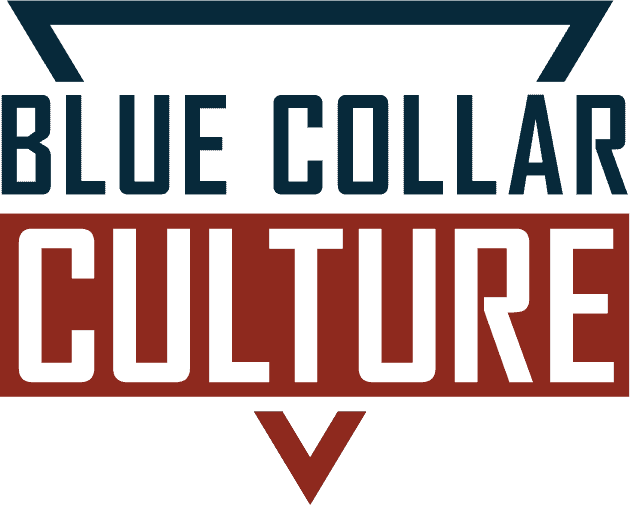
Everyone wants to drive their business to success. Good thing we have so many tools at our disposal that could help us achieve that. But what is the best one out there? In this episode, Bryan Kaplan of Construction Consulting shares his wealth of knowledge in explaining the number one growth tool that drives many organizations to success: the Weekly Status Review Meeting (WSR). He also reminds us that your people want to know that you have a plan for them, so set that roadmap. This episode is filled with buckets of wisdom on recruiting, onboarding, and retention, so tune in to know more!
—
The WSR Is Your #1 Growth Tool With Bryan Kaplan
Bryan, welcome to the show.
Thanks so much for having me.
You’ve been doing this for a long time. You’ve been in the construction space for a long time, and I know that you have a wealth of knowledge to share with our readers. Before we get to all that, though, tell me, in your opinion, what is the biggest myth in your industry that you want to shatter for our readers right now?
I will say that recruiting, onboarding, and retention are business activities. Before we started, we said that was one of the marketing activities, which they very much are, but they are very much business activities. We can’t hire a bunch of people to do our onboarding and then hope for the best because that’s when the work starts.
We can't just hire a bunch of people, do our onboarding, and then hope for the best because that's when the work starts. Click To TweetIf they do onboarding.
I was giving everyone the benefit of the doubt.
I get it. Onboarding is not making sure they fill out their I-9 W-2 and that they have got all their new hire paperwork done. That is not onboarding. It is interesting. There are business activities and it’s something that you need to focus on. You need to think about it. It’s something your leadership team should be discussing, talking about strategizing, planning, and all of that stuff. Is that what you are saying?
Absolutely. This is an ongoing activity. It’s also decentralized, meaning that everybody in your company should be contributing to this in some way, shape, or form. Your employees or your team members that you have should be helping to recruit other people that they might know. They should be willing, because you have such a great culture, to do a testimonial of their experience in working in your brand. It goes all the way side to side on your organizational chart, like everyone should be focused on this for sure.
I do a lot of public speaking and I survey the audience. I’m like, “How many people do you have that are responsible for recruiting?” Someone will own a 400-employee shop and they will be like, “Three.” I’m like, “No, you should have 400.” For those of you reading, it’s a trick question when somebody asks you how many people you have responsible for recruiting. It should be your headcount of how many people you have on your team. This is important. You mentioned that it’s a business activity, and I’ve seen you say that because not everybody believes that. What do you think it is that keeps people from treating this recruiting and retention as a business activity? What’s holding them back?
In residential construction, I would say it’s the volume of stuff that’s going on a daily basis. It’s very easy. I need somebody to put out a job description, get a resumé or a few, shortlist it, hire somebody, and then be able to focus on the next thing. It’s the business and probably a lot of lack of systemization and process-oriented work that they do in their business.
I know that you and I have a passion for process in getting these things in here. I tell people the time, the process isn’t for you. It’s for your people. They need the process. You mentioned that they’ve got all of these things and it’s the stuff. We were even talking here. It’s one of those days. How often does that come up? I talked to a lot of people in the construction space like, “Can’t meet today.” “Why not?” “We had an emergency.” “Everybody okay?” “Everybody’s fine. We had this other thing that we call an emergency.” What are some actions that our readers could take to break through this wall and start thinking about people and this process and all of that? What are some things that you’d recommend for them?
There’s a ton here. The big thing is understanding that you can’t be almost predictable in that when all of a sudden, I need somebody, I have got to go and find somebody and then hope for the best once I “onboard them.” Part of it is prioritizing your workflow. If we go into the business side of things, we want to take the right opportunities. We want to get super clear about what we sell, who we sell it to, and how we succeed as a company.
We talked before we went on here about things that get measured and improved. A lot of business owners aren’t stopping to take a breath to think about their business, which is working on your business. Understanding that this machine will keep going if you allow it to. If you keep kicking the can down the road, it’s going to keep going down the road and nothing’s going to change.
A lot of it is taking stock, taking a pause to think about your business, recognizing where you guys succeed as business owners, but as a team, and then making sure that you can dedicate some time to focusing on this huge aspect of your business. I always say you can’t do it alone. If you could, there are contractors out there working by themselves.
They have worked by themselves for 20, 25, or 30 years, whatever it is, but there’s a ceiling. For some people, that’s fine. They want to be there, but they are sick. They get COVID. They are not at work and they are not earning. It’s not a business. It’s more like you are an employee for the people that hire you thing. That’s what I would say.
I met some people like that. I met a guy who was at a trade show and he goes, “I used to have 22 people on my team. I got rid of all of them. I went by myself. I make more money. I have more freedom. Life is so much better,” but he’s got a job. If he gets sick, gets hurt, and out for six weeks, work’s not getting done, so I totally get that.
You had said there are a whole bunch of things they can do to figure this out. That mindset component of it was what I heard you say that’s a big piece of it. You got to start thinking differently about how you solve this problem. Think differently about the way you do your business. Give us some pointers. What are some things that we can do to make that shift and start building these processes and start having this machine that helps us with our people?
The first thing that I tell everybody is without time, none of it’s going to be possible. You have to find a way to limit yourself from doing probably 60 to 70 things a week that you shouldn’t be doing as a business owner. If you are running a small business and you are running around and picking up material. You are running around and on the job site and you are the center. You are that center hub of your business. It’s going to be very hard for you to replace yourself and take this time to dedicate to focusing on the bigger picture.

There’s no blue magic pill, but I would say that you pick off a few low-hanging fruits. Look into the organization, all the people that you have. Who is someone if you don’t have anybody that can be viewed as a supervisor, someone that can help you get the production side of things done so that you are not running around to every single job site every day?
Don’t run around and pick up equipment or material. There are tons of services in all major cities across US and Canada that do this. All of your suppliers will do this for you. Don’t run around and do that. Don’t convince yourself that you need to do that. Don’t sit on your email inbox. Set specific alignments with your clients in terms of the communication that you do with them.
Set specific days that you go and meet with clients so that you are not doing it as an ad hoc service. The big idea here is you’ve got to respect and protect your own time because if you don’t, then someone else will basically use it for their own agenda. This is one of the huge things. There are a lot of things that I could say here about what to do, but those are some of the big ones I would say for sure.
You have to respect and protect your time. Otherwise, someone else will use it for their agenda. Click To TweetThat protecting the calendar, protecting your time, and carving it out for the things that are most important, I still struggle with that. It’s difficult. We are not saying that some of these things are easy, but I do think that something important here is progress is more important than perfection. Even if you could find an hour a week to start, that would be a great place to start. I’m sure we will need more than an hour a week, but at least starting somewhere and protecting that time. One of the things that I have learned and seen this happen over and over again, especially in construction, is those things that you think are super urgent aren’t always that urgent.
That’s exactly it. Picking up that shoring jack or that set of scaffolds and running to a job site, we think it’s important. It’s urgent. It’s not important. What it’s telling us is that we didn’t plan well. We probably aren’t also releasing some of that Darth Vader grip I like to talk about on our business and trusting people in our organization.
Allow them to take those things off your hands and start to release some of that grip. I always say that the people around you are incredibly smart and they have a lot of value to help you run your business if you are willing to listen to them. I suffered from this for years. Once I finally understood this and got it, it was game-changing for me.

I hear people tell me all the time, “I can’t go to my team with this because they won’t know how to solve it.” I’m like, “They are the ones doing this all day, every day. They are going to have ideas you never even thought was possible and it might blow your mind.”
If you solve it for them, there’s no accountability or buy-in because they weren’t part of that solution. Ask them and involve them in the solution because that’s how you build accountability.
We talk to our clients all the time about recruiting and how important these things are, but time and time again, this new generation that’s in the workforce, they want these opportunities to learn and to take on new responsibilities and grow in their career. They want these things. They are not good at communicating it and telling you they want them, but every survey I have ever seen in the last decades says they want it. Let them make these decisions and maybe even letting them fail on occasion. They can learn and they can grow, and then you don’t have to worry and after a while that you are going to see that, “They know how to make these decisions and make things move forward. I love it.”
This idea of controlled failure is what I call it. Picture a road with grassy side shoulder thing and fields on the left and right side. In general, you are going down the business road and people sometimes get a little off track. All of a sudden, the tire is on the gravel, and then soon enough they are going to be on the grass.
What you are trying to do is give them some guardrails of safety. Nudge them back on the path. That is the support or that is maybe some tools and tactics, but make it low stakes. Give them the ability to grow. It’s like if you are coaching kids on a soccer team. You want to give them encouragement a little bit here and here and here. You can’t be too hard on them and yell at them because they don’t understand. The idea is to give them a little bit that they can be successful in and continue to build on that.
Give your employees the ability to grow. Click To TweetIt makes total sense. Hearing you talk about this, I’m already picturing a couple of people saying, “It’s faster if I do it myself.”
I don’t disagree, but that’s the exact low-hanging fruit. That is the quagmire. That is the trap we all get into where I could spend five minutes doing this or I could spend 30 minutes teaching somebody. The thing is, if I take the 30 minutes, maybe it’s not going to be only one session that I do it may be 2 or 3 sessions to do it. I never have to do those tasks again and that’s all the urgent but not important stuff that’s in your business. That’s all the site communications, picking up materials, picking up equipment, or shuffling your team calendar and other people can do all those things. It doesn’t have to be you doing it.
Any tips on how to break through that and start that process? I hear it takes me five minutes to do it or I got to sit down 30 minutes a couple of times. That’s a future problem for me to deal with. Kick the can down the road like you said. Eventually, the can is further down the road. Any tips or advice you have for our readers on how to break through that so that they don’t get stuck in that?
There are two things I would say. The first is you need a right-hand person and every business owner needs this. You need a right-hand person, and then the second thing is to start to document it as you do it. This is probably going to be the hardest thing for any human being to do because it’s the most unnatural behavioral heuristic that we have or a pattern to change our psychology.
We are meant to go through and do the process and be done with it instead of pausing at every step and documenting the steps that I need to take. It can be a very simple word file, Google Doc, Google sheet, or whatever format you want to put it in. Every time you do something, start to write what the steps were.

If there’s a hyperlink to a platform that you are using, put the hyperlink in there. If there’s something that you know very well but you can imagine that someone doing it for the first time might get tripped up on, take a moment and write a short paragraph explaining what it is and how they get around it. Progress over perfection or, as I would say, done is better than perfect. Remember that it’s never going to be perfect. There’s no such thing as perfection. That’s a myth I can shatter for sure.
Getting started is the important thing. Let’s go back for a second to the right-hand person. Every business owner needs this because you can’t pass. You hear that everyone has a different way of spinning this, but does your business pass the fishing test? This is the new buzz term that’s going around social media.
The idea being, “Could you leave for two weeks and go fishing and your company would run without you,” thing. This is why you need a right-hand person because you rarely can do that without being able to vacation as opposed to checking in every single day, checking your email every single day and making sure everything’s going well.
That hits home with me so personally right now. I got back from this trade show and I ended up with COVID and I was down for six days. If I didn’t have somebody that could cover for me and take care of the clients, take care of the business, and run the thing, we’d probably still be in business, but it would have been ugly once I got back and had to deal with everything. I totally get that. I love that. I love fishing. Taking two weeks off to go fishing. It’s important.
What’s something else they can do to break through this wall that’s holding them back? This thing or belief that, “I’m the only one that can do it. I don’t need the process. I’m the only one that can recruit. I can’t trust anybody else.” These are all beliefs. What are some other tips or maybe another tip that you have for our readers to help them break through this?
Maybe this will help. I have a client and we were talking about one of his team members, and this team member, I would say he has a bit of a short fuse at times. We have all possibly been in a business or been acquainted with someone that has that and one day, he kept saying, “This guy sucks and that guy sucks,” and he is going on and on about every trade partner that they work with and every employee that’s in the company.
Finally, the business owner said, “I need you to look in the mirror for a second. What’s the common denominator here?” Obviously, for him, the common denominator is himself. Part of this is some tough love that I will give everybody to say that it’s about looking in the mirror and it’s about understanding that every time there is a failure or a success in your business. It doesn’t matter what industry you are in. As a leader that’s what we want to be looking at. What was my involvement in basically the success or the failure?
Taking that extreme ownership approach to say that, “If someone fails, I didn’t provide them with enough context, strategy, tactics, tools, support, or whatever it looks like. What could I do differently to get a better outcome the next time?” People screw things up. I have been in the construction industry a long time and I have screwed a lot of things up, and a lot of people around me have screwed a lot of things up, but me yelling at them isn’t going to change any outcome because I’m not helping them with the support, the tools and all of that so that they don’t make that mistake next time. One of the big things that we can do to start.
If you haven’t read the book by Jocko Willink, he’s an ex-Navy SEAL guy. Some people obviously might be familiar with that book. The concept is valuable. By midway through the book, it’s regurgitating the same thing over and over, but the concepts are good. One of the things I have always done is lead with outcomes as opposed to tasks, and the extreme ownership approach is very much focused in that realm. Looking in the mirror and understanding that when we succeed, it’s the team that succeeds. When we fail, I have to look in the mirror and say, “What didn’t I do? What could I do better that’s going to help my team in the future?”
That leads me to something that is important to you. We talked a little bit about investing in your people and giving them a career path and mapping that out for them and helping with that. Let them know that it might hurt a little, but there’s an outcome that we are after. We are not focused on this task. We are on that outcome.
Talk to us a little bit about that career roadmap and some things that people can do to keep their people engaged because I see this firsthand. A lot of people tell me they have a hiring problem and then I ask them how many W-2s they issued last year. They don’t have a hiring problem. They have a retention problem. You are talking about pouring into your people, investing in them, teaching them and letting them know that they are part of this. They are part of the high-stakes game that we are playing. That career roadmap is huge to that. Can you talk a little bit about that? Maybe plant some seeds for our readers?
The first thing I’m going to say and I will come back to it, is that the number one tool for your success, if you have an organization with people or you are looking to hire people and grow your organization, is going to be this weekly status review meeting, this WSR. This is the central thing that’s going to be the success point for your business.
Let me back up and say that to start, we always want to lead with outcomes. We want to make sure that people understand what we are driving towards. One of the things that align with the Extreme Ownership book and the concept as well, it’s about decentralizing the command. The typical thing I need to hire somebody, I go to Indeed, I look at a few job posts, or maybe I have a prior one that I have had.
I copy-paste and I mash something together that’s about two pages long with 1,200 words in it that I have to read through. People are skimming. They don’t read all of that information. It’s all tasks. It’s all, “You are going to do this.” How many times have you seen or written must be able to work in a fast-paced environment?
Those words are every single job post I have ever seen in my life. The point is that we are not different. Coming back to your marketing point about we have to do something different to attract people, but point is we want to lead with outcomes. We want to help people understand how they are going to succeed. You’ll be successful in this role if it’s client experience and we have the highest level of client experience and satisfaction. I can use that.
When we decentralize command, we put the decision-making as close to the front lines of your business as possible. We help them understand what we are trying to achieve. Specifically, it’s around communication. We want high client experience and satisfaction. I can use that to maybe step outside the boundaries of when we normally communicate with a client because I know that I’m serving that outcome as a site superintendent or project manager.

We want to get clear on all of that. We form our position agreement, which gets clear on the outcomes and some of the specific job functions, and then that parlays into the career roadmap. The career roadmap is something I would bring to every single interview, and I would show people, here is what it looks like if right now you are a carpenter or this is what a lead carpenter’s role is, this is what a site superintendent is, and this is what a project manager’s role is.
Ironically, as the general manager, people, I would always ask them, “Where do you want to grow to?” They say, “Maybe general manager one day.” I was like, “Okay. I’m sitting right here, but if you can do the job better than me, that’s fine. Hopefully, I will find something else to do.” The idea is that we want to get clear on the outcomes for each role and how it changes as you move through different positions and this is what the roadmap is destined to do.
The WSR that I talked about a moment ago, there are two sides to it. One, it’s a production side. We help people think through the problems. We are sticking with the fishing analogy. We are teaching them to fish as opposed to fishing for them. I have done this many a times where we have a client that maybe is upset about something and I’m like, “Don’t worry. I will write the email,” as opposed to helping them understand what the client’s probably feeling, what we might want to think about when we respond, and what are the outcomes of what we are going to respond with a thing.
That’s a tactical example of how I could change that. Instead of me writing it, I can help them understand those three things. Teaching them how to fish for themselves. The career roadmap will help us to see how we develop through all those stages. The second part is what things do I need to work on to go through those stages. I had a lot of people that were carpenters or leads that wanted to be superintendents or project managers. I was teaching project management 5:00 on Wednesdays and anybody could join, and I was helping them set some goals for themselves and regularly check in on those goals.
The career roadmap will help us see how we develop through all those stages. Click To TweetIt’s not necessarily a weekly thing, but let’s say every 4, 6, or 8 weeks, and no longer than every 90 days. We want to check in on how have you advanced through these goals. What do you need from us? What are you committing to? What do I need to support you? What obstacles or roadblocks are you encountering?
This is about pouring into your people. I always say, “Once you hire somebody, that’s when the real work begins because the recruiting part is easy.” There are a lot of people that are rolling their eyes right now because they are like, “Have you tried to hire somebody in the past few years?” As you said, you don’t have a hiring problem. You have a recruiting problem. This is the crux of what it means to develop people in your industry or in your business.
There’s a whole episode of questions I have from what you said. It’s great. The one thing that I heard is that all of our readers should hit know is that your people want to know that you have a plan for them.
People want to be led.
When you sit down at the interview with that roadmap, they know that you are invested long term. It’s not a, “You’ll work here until it doesn’t work out,” which is how a lot of interviews go these days. You got a pulse, you can fog a mirror, and you are hired. Candidates don’t like that any more than you like that. Job seekers can’t stand that. That’s why they are not applying for these jobs anymore because they are tired of that.
If you could sit down and say, “We have got this roadmap for you. We are going to show you and we are going to do it with you too.” It’s not, “Here’s the thing. Good luck.” We are a part of this together and we are doing these weekly status reports. There’s so much value in investing in your people that way and building that relationship that, even if you don’t do that stuff perfectly, your retention will go through the roof.
For sure and it all comes back to building a culture. When you show up in an interview with a career roadmap, it’s that concept of reverent power. This is something we do. This is normal. This is part of who we are as an organization. These are our core values and people want to be led. Interestingly enough, we were talking about before we hopped on, we were talking about recruiting as a marketing activity, which I agree with. I always talk about it because your clients and your team members are basically the same group of people that you are selling to if you think about it.
When we are marketing, we are trying to attract them. We are trying to speak to the things that are going to drive them, the things that they are passionate about. There’s the third principle of what motivates human beings, which is autonomy, by providing people with this roadmap and helping them see that they can move towards these different roles that give them more of that. These are the three things purpose, autonomy, and mastery. That’s what’s going to motivate me as a human being. To your point, hiring me and then until it doesn’t work out thing, there’s nothing in it for me. I’m already out the door when I get in the thing.
It’s so much stuff to unpack here. I know there are people reading right now that they are going to want to learn more. They have read what you’ve said and I know you’ve got a wealth of knowledge beyond what we can do in one episode here. How do people get ahold of you and how do they learn more?
The easiest way is the website ConstructionConsulting.co, and then I’m also very active at the same handle on Instagram, so you can send me a direct message there. I post a lot of content and I’m pretty active on LinkedIn as well. If you search for Bryan Kaplan, you’ll be able to find me and you can book a time for us to speak directly through the website and be happy to chat with everybody about their challenges.
Bryan, thank you so much for being on the show. I enjoyed the conversation. I have learned a ton.
Perfect. Thanks so much. I appreciate it.
Important Links
- Bryan Kaplan
- Extreme Ownership
- ConstructionConsulting.co
- Instagram – Bryan Kaplan
- https://www.ConstructionConsultingAcademy.com/build-profit-apply
About Bryan Kaplan
 My vision is to empower every construction business owner to be valued, respected, and treated as a professional no different than a doctor or a lawyer. Through my training programs and masterclasses, I will help you change how you do business. Here is my story.
My vision is to empower every construction business owner to be valued, respected, and treated as a professional no different than a doctor or a lawyer. Through my training programs and masterclasses, I will help you change how you do business. Here is my story.
Love the show? Subscribe, rate, review, and share! https://bluecollarculture.com/podcast/

